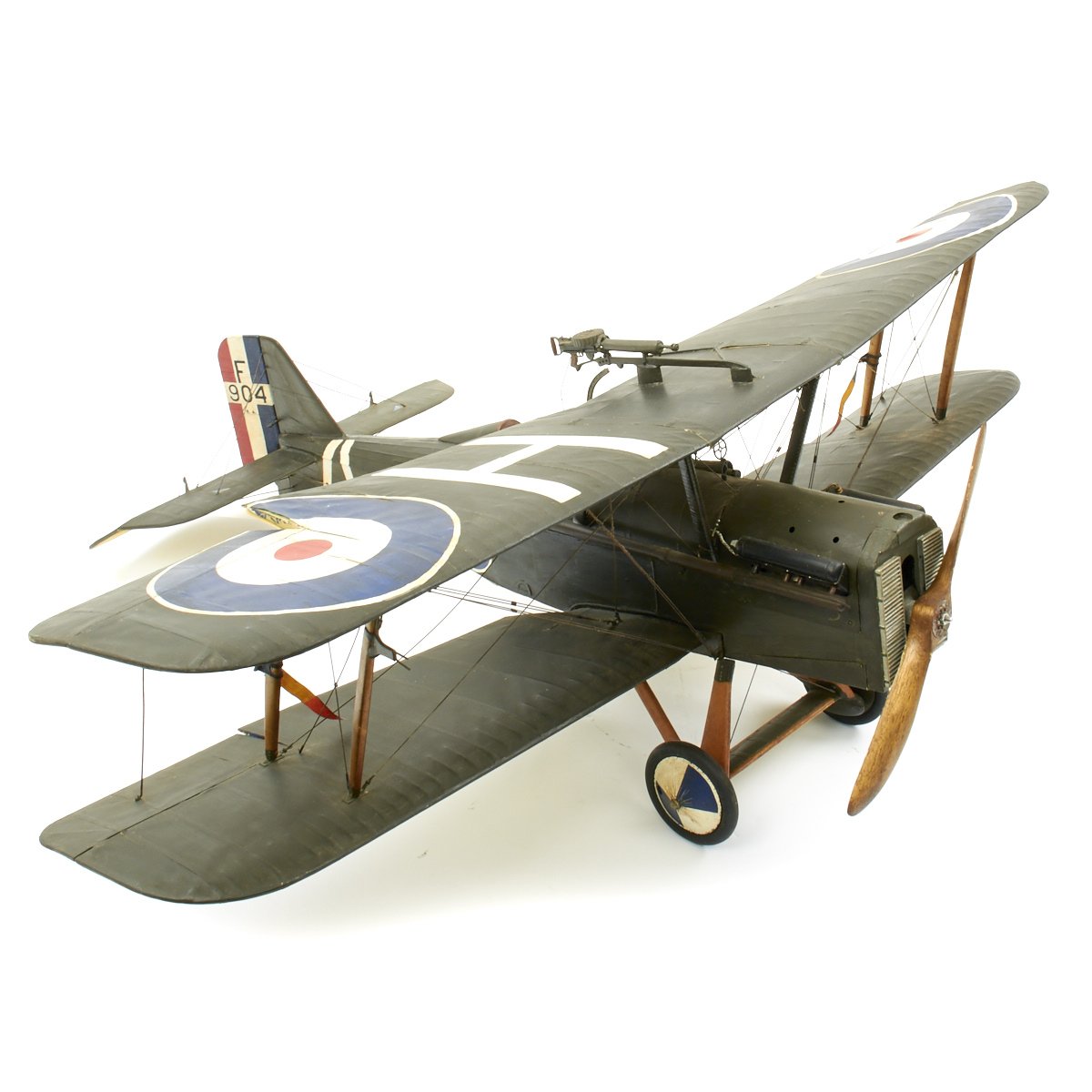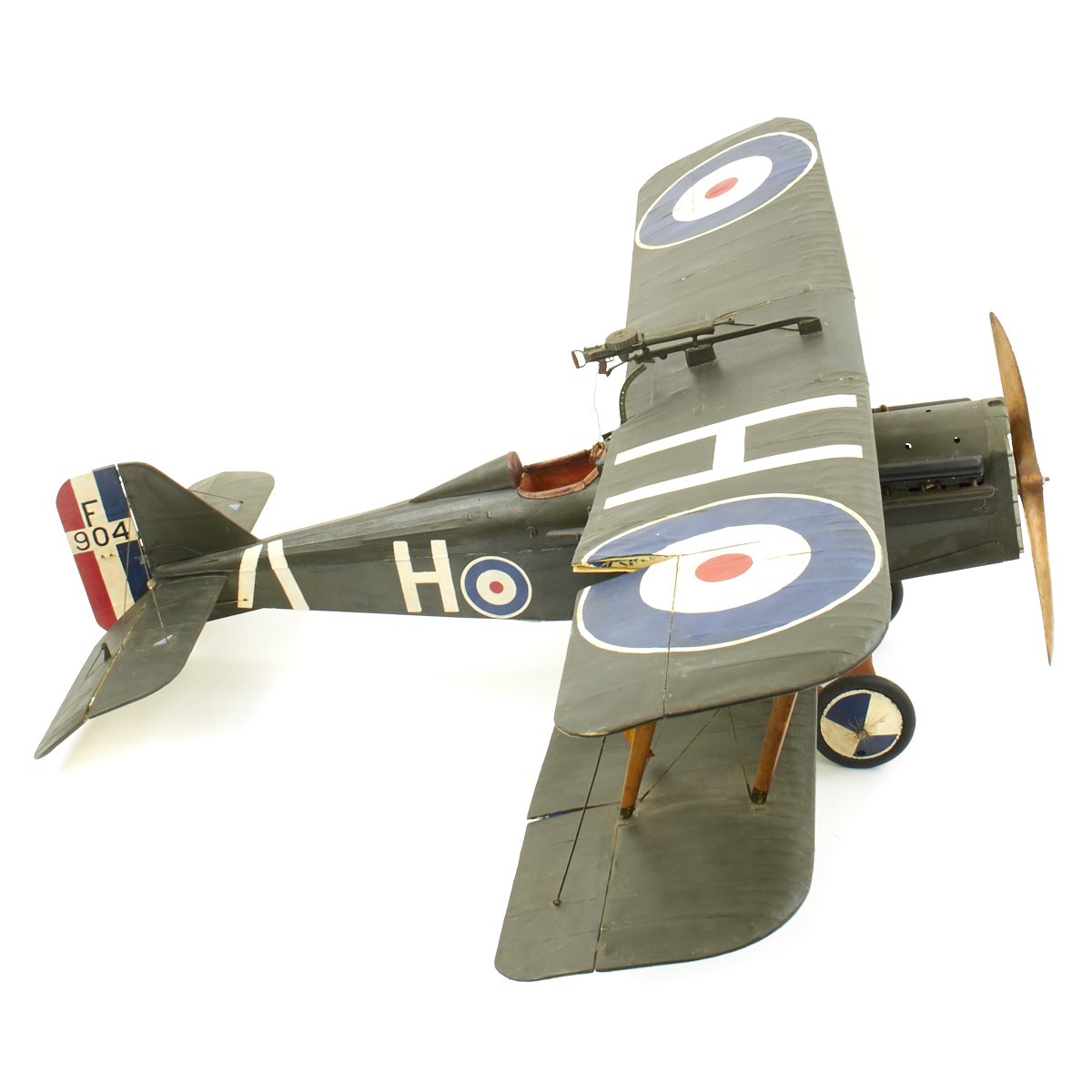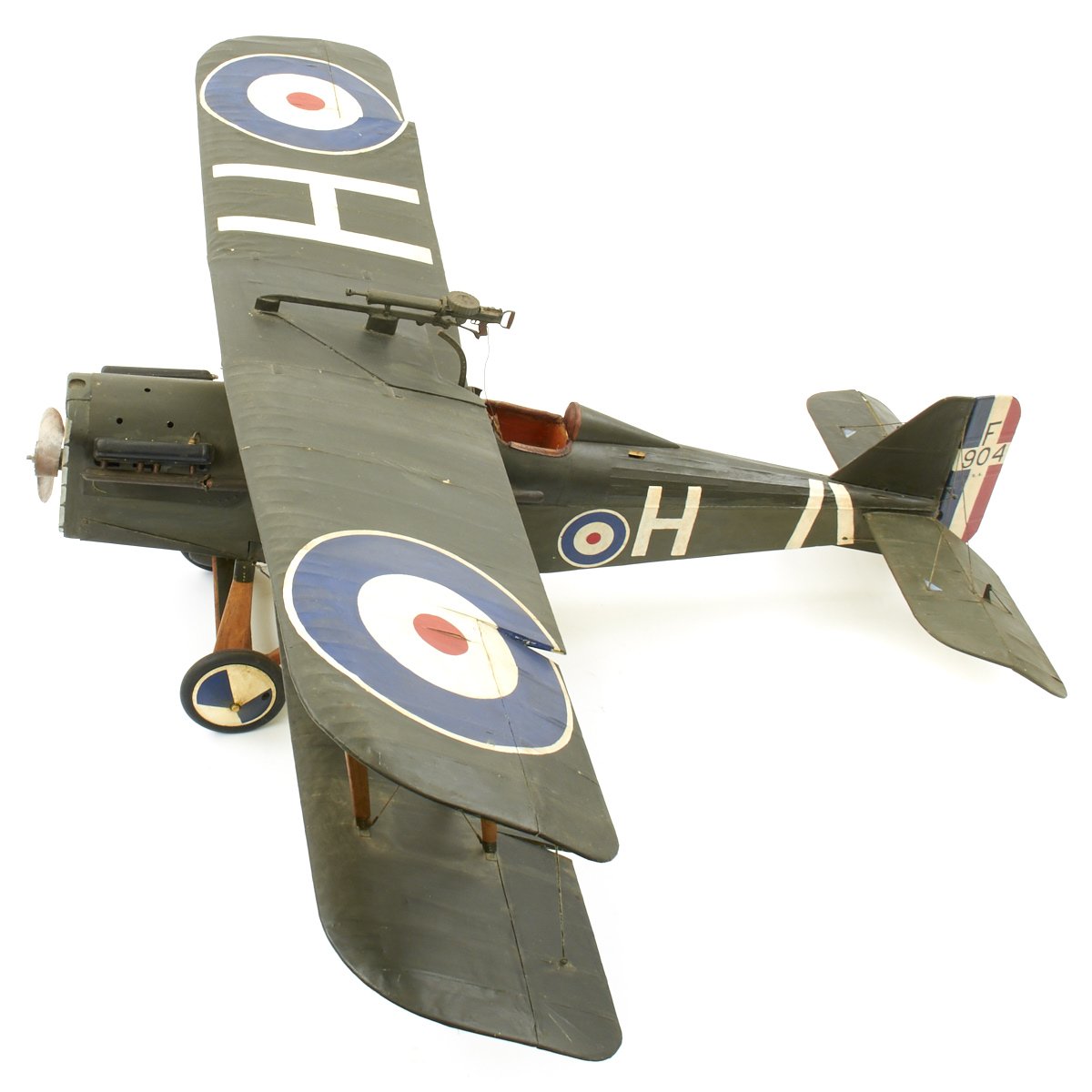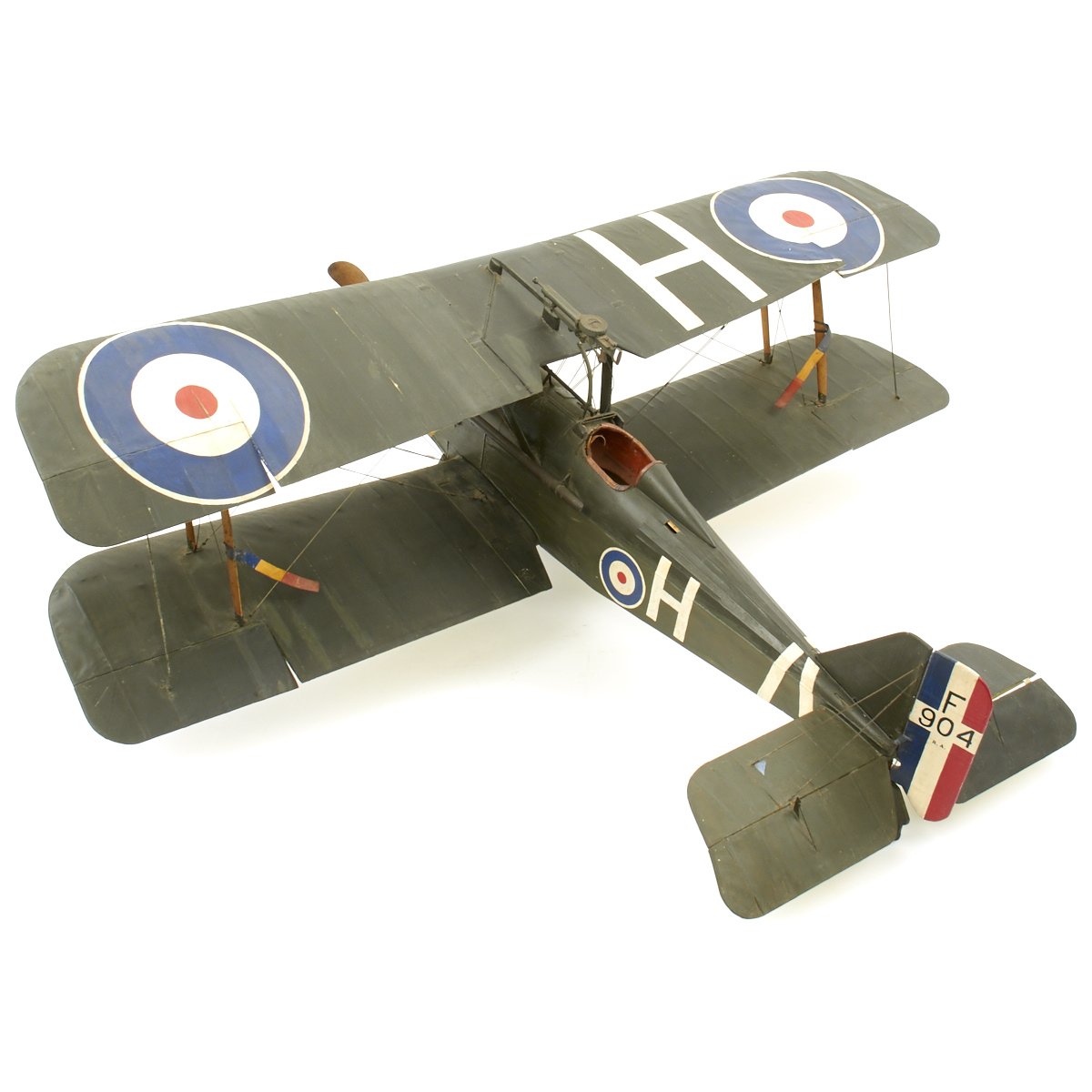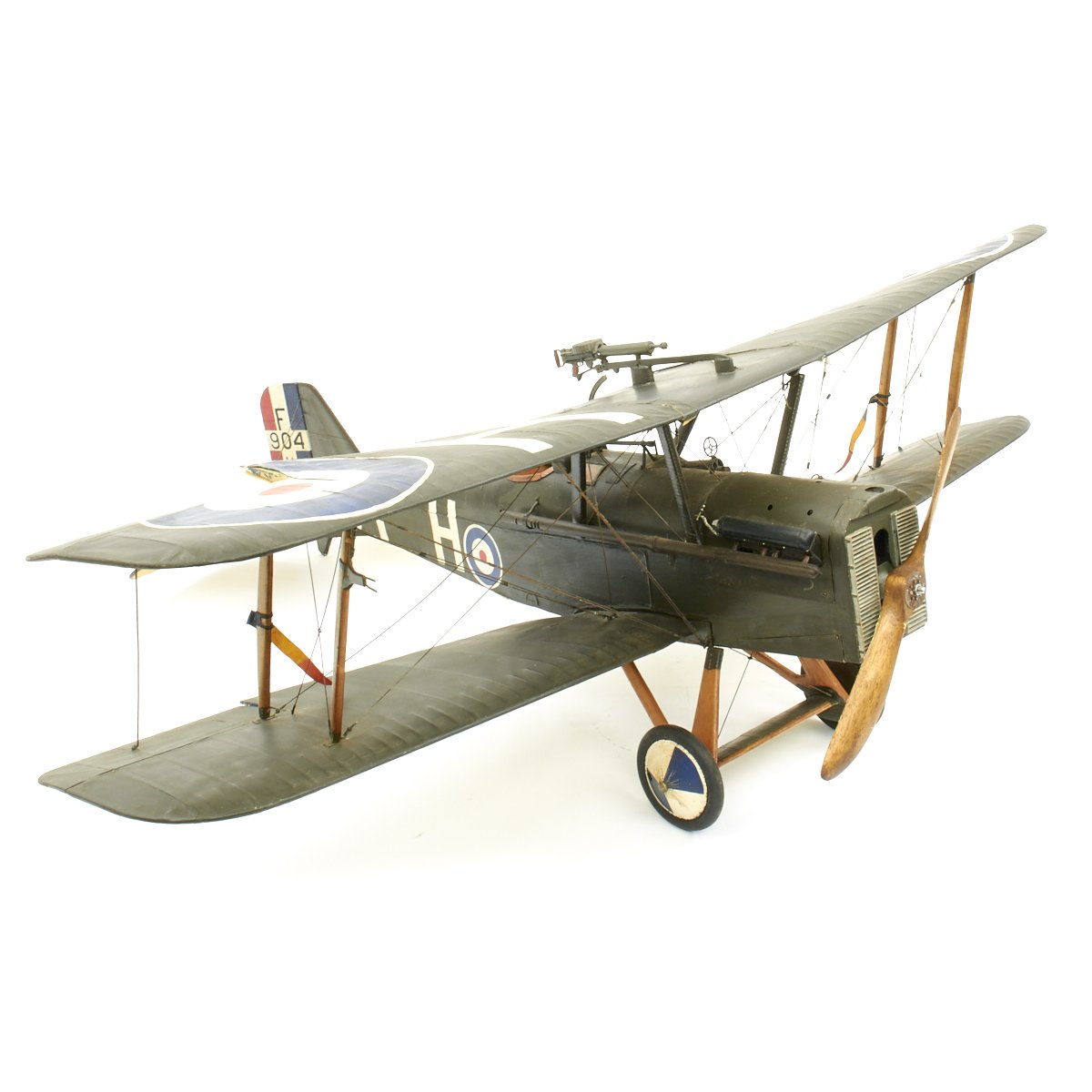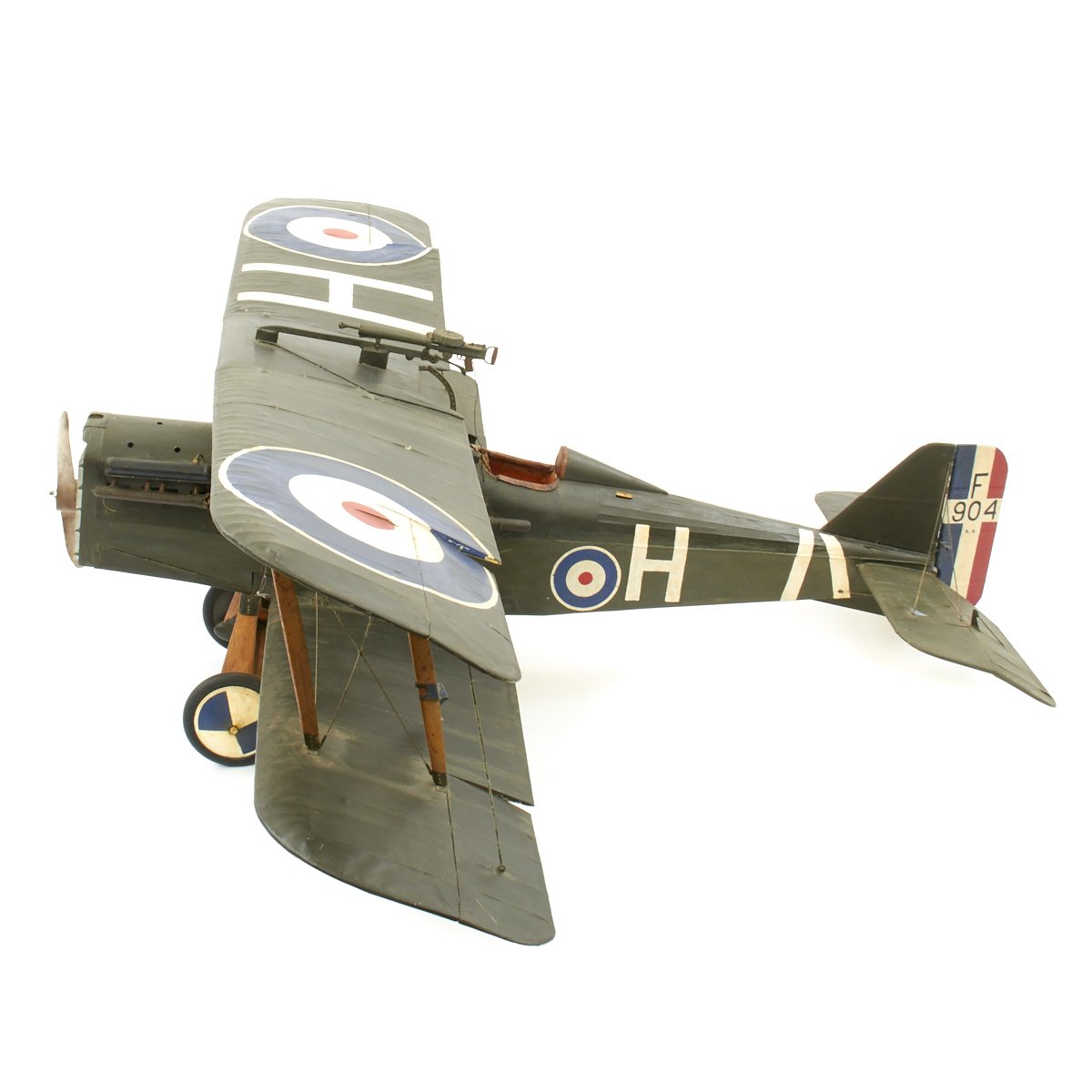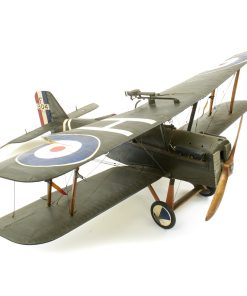Original British WWI Royal Aircraft SE5 Large Scale Model Plane for 1927 Film Wings Original Items
$ 1.495,00 $ 373,75
Original Item: Only One Available. This is an incredible custom hand made model World War One Royal Aircraft SE5 biplane that was constructed, we were told, as set decoration for the 1927 film WINGS. It is uses period materials (wood, canvas, wire, etc) and construction methods (no plastic!) and is built to exacting detail. The plane measures 53″ (wingspan) x 41″ (tail to propeller) x 17″ (tall). It is offered in excellent condition and even has a small Lewis Gun mounted to the top wing and a Vickers Gun mounted to the side of the fuselage in front of the cockpit just like the original Royal Aircraft SE5 fighter plane.
The Royal Aircraft Factory S.E.5 was a British biplane fighter aircraft of the First World War. It was developed at the Royal Aircraft Factory by a team consisting of Henry Folland, John Kenworthy and Major Frank Goodden. It was one of the fastest aircraft of the war, while being both stable and relatively manoeuvrable. According to aviation author Robert Jackson, the S.E.5 was: “the nimble fighter that has since been described as the ‘Spitfire of World War One'”.
In most respects the S.E.5 had superior performance to the rival Sopwith Camel, although it was less immediately responsive to the controls. Problems with its Hispano-Suiza engine, particularly the geared-output H-S 8B-powered early versions, meant that there was a chronic shortage of the type until well into 1918. Thus, while the first examples had reached the Western Front before the Camel, there were fewer squadrons equipped with the S.E.5 than with the Sopwith fighter.
Together with the Camel, the S.E.5 was instrumental in regaining allied air superiority in mid-1917 and maintaining it for the rest of the war, ensuring there was no repetition of “Bloody April” 1917 when losses in the Royal Flying Corps were much heavier than in the Luftstreitkräfte. The S.E.5s remained in RAF service for some time following the Armistice that ended the conflict; some were transferred to various overseas military operators, while a number were also adopted by civilian operators.
WINGS is a 1927 American silent war film set during the First World War produced by Lucien Hubbard, directed by William A. Wellman and released by Paramount Pictures. It stars Clara Bow, Charles “Buddy” Rogers and Richard Arlen. Gary Cooper appears in a small role which helped launch his career in Hollywood.
The film, a romantic action-war picture, was rewritten by scriptwriters Hope Loring and Louis D. Lighton from a story by John Monk Saunders to accommodate Bow, Paramount’s biggest star at the time. Wellman was hired as he was the only director in Hollywood at the time who had World War I combat pilot experience, although Richard Arlen and John Monk Saunders had also served in the war as military aviators. The film was shot on location on a budget of $2 million (equivalent to $28.30 million in 2018) at Kelly Field in San Antonio, Texas between September 7, 1926 and April 7, 1927. Hundreds of extras and some 300 pilots were involved in the filming, including pilots and planes of the United States Army Air Corps which were brought in for the filming and to provide assistance and supervision. Wellman extensively rehearsed the scenes for the Battle of Saint-Mihiel over ten days with some 3500 infantrymen on a battlefield made for the production on location. Although the cast and crew had much spare time during the filming because of weather delays, shooting conditions were intense, and Wellman frequently conflicted with the military officers brought in to supervise the picture.
Acclaimed for its technical prowess and realism upon release, the film became the yardstick against which future aviation films were measured, mainly because of its realistic air-combat sequences. It went on to win the first Academy Award for Best Picture at the first annual Academy of Motion Picture Arts and Sciences award ceremony in 1929, the only silent film to do so. It also won the Academy Award for Best Engineering Effects (Roy Pomeroy). Wings was one of the first to show two men kissing, and also one of the first widely released films to show nudity. In 1997, Wings was selected for preservation in the United States National Film Registry by the Library of Congress as being “culturally, historically, or aesthetically significant”, and the film was re-released to Cinemark theaters to coincide with the 85th Anniversary for a limited run in May 2012.
Fast Shipping with Professional Packaging
Thanks to our longstanding association with UPS FedEx DHL, and other major international carriers, we are able to provide a range of shipping options. Our warehouse staff is expertly trained and will wrap your products according to our exact and precise specifications. Prior to shipping, your goods will be thoroughly examined and securely secured. We ship to thousands clients each day across multiple countries. This shows how we're dedicated to be the largest retailer on the internet. Warehouses and distribution centres can be located throughout Europe as well as the USA.
Note: Orders with more than one item will be assigned a processing date depending on the item.
Before shipping before shipping, we'll conduct a thorough inspection of the items you have ordered. Today, the majority of orders will be delivered within 48 hours. The delivery time will be between 3-7 days.
Returns
The stock is dynamic and we cannot completely manage it because multiple stakeholders are involved, including our factory and warehouse. So the actual stock may alter at any time. It's possible that you may not receive your order once the order has been made.
Our policy is valid for a period of 30 days. If you don't receive the product within 30 days, we are not able to issue a refund or an exchange.
You can only return an item if it is unused and in the same state as the day you received it. You must have the item in its original packaging.
Related products
Uncategorized
Uncategorized
Angolan Rebel 1970s era 60mm Inert Display Mortar from Angolan Civil War Original Items
Uncategorized
Uncategorized
Uncategorized
Uncategorized
Uncategorized
Uncategorized
Band of Brothers ORIGINAL GERMAN WWII Le. F.H. 18 10.5cm ARTILLERY PIECE Original Items
Uncategorized
Uncategorized
Uncategorized
Uncategorized
Uncategorized
Uncategorized
Australian WWII Owen MK1 Machine Carbine SMG Custom Fabricated Replica with Sling Original Items
Uncategorized
Uncategorized
Uncategorized
Armored Burgonet Helmet & Polearm from Scottish Castle Leith Hall Circa 1700 Original Items
